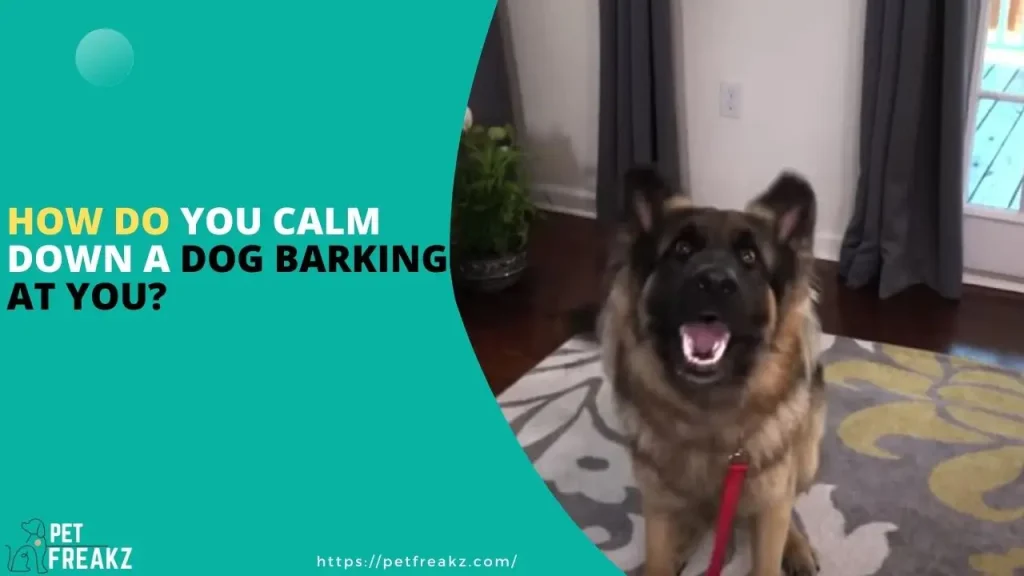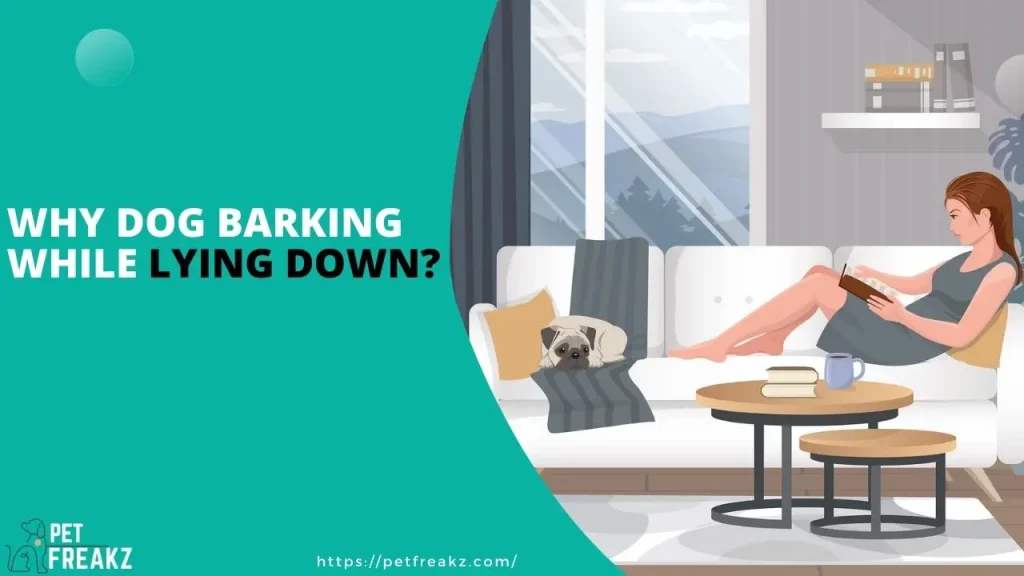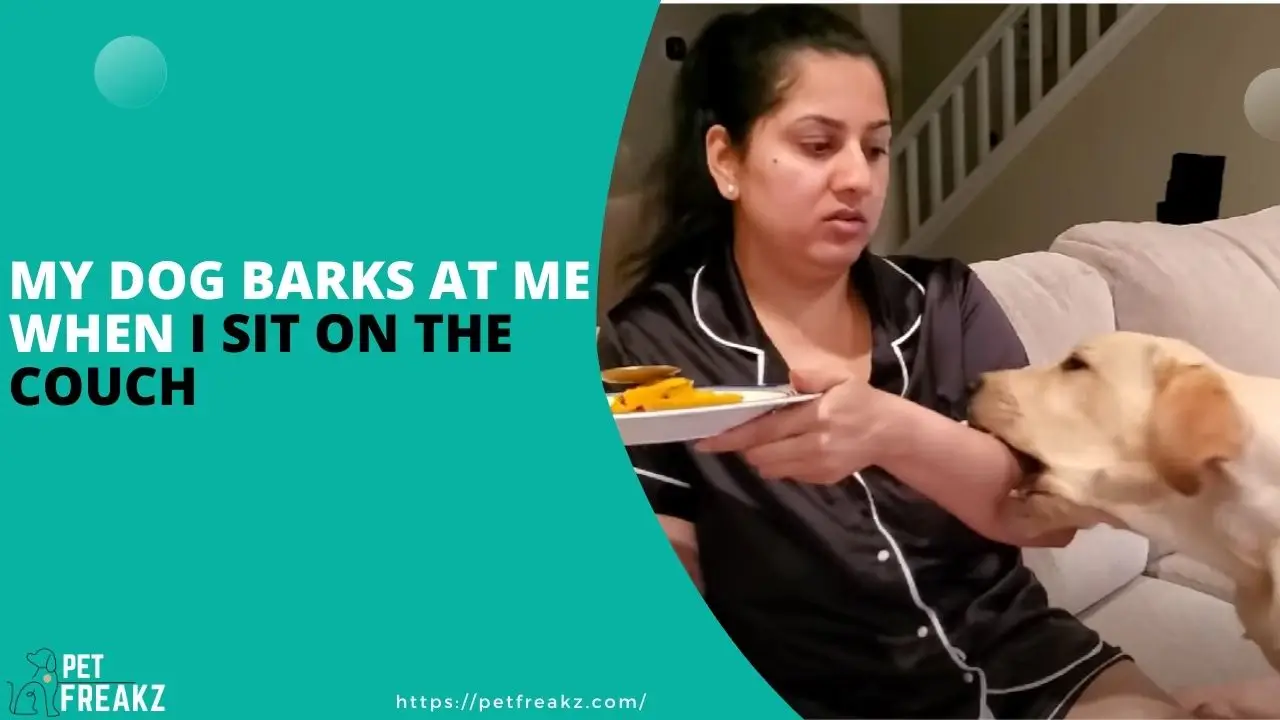Table of Contents
Understanding territorial barking in dogs
Territorial barking is a common behaviour among dogs that can be triggered by various factors. When your dog barks at you when you sit on the couch, it could be their way of marking their territory and asserting dominance. Dogs are naturally territorial animals, and they may feel the need to protect their space, including the couch, from perceived intruders or threats.
It is important to remember that dogs are pack animals, and their instinct is to establish and defend their territory. When they see you sitting on the couch, they may interpret it as an invasion of their space. This territorial barking can be accompanied by other signs of dominance, such as growling, raised fur, or a stiff posture.
To address territorial barking, it is important to establish yourself as the pack leader and teach your dog appropriate boundaries. Consistency and positive reinforcement are key. Set clear rules and boundaries for your dog, and reward them when they display calm and non-aggressive behaviour. Additionally, providing your dog with its own designated space, such as a comfortable dog bed or crate, can help them feel secure and reduce territorial tendencies.
Common reasons why my dog barks at me when I sit on the couch
There are several common reasons why dogs may bark at their owners when they are sitting on the couch. One probable explanation is that your dog is looking for attention. Dogs are sociable animals who need to engage with their owners. They may turn to bark to catch your attention if they feel ignored or neglected.
Another reason could be separation anxiety. Dogs that suffer from separation anxiety may become anxious or stressed when their owners are out of sight or not giving them attention. Barking is their way of expressing their distress and seeking reassurance.
Additionally, some dogs may bark when their owners sit on the couch as a form of demand barking. This type of barking is often accompanied by other demanding behaviours, such as pawing at you or bringing you toys. It is important to address the demand for barking promptly to prevent it from becoming a habit.
How do I get my dog to stop territorial barking?

To stop territorial barking in dogs, it is essential to address the underlying causes and provide appropriate training and guidance. Here are some effective strategies to help you manage and minimize territorial barking:
Establish yourself as the pack leader:
Dogs need clear leadership and boundaries. By consistently asserting your authority and providing structure, you can help your dog understand their place in the pack and reduce territorial behaviours.
Socialize your dog:
Expose your dog to various environments, people, and situations from a young age. Proper socialization can help them become more confident and less likely to perceive everyday situations, such as sitting on the couch, as threats.
Provide mental and physical stimulation:
Boredom can contribute to territorial barking. Make sure your dog receives regular exercise, mental enrichment, and interactive playtime to keep them occupied and satisfied.
Reward calm behaviour:
Whenever your dog remains calm and does not bark when you sit on the couch, reward them with treats, praise, or affection. This positive reinforcement will help reinforce the desired behaviour.
Seek professional help if needed:
If your dog’s territorial barking persists despite your efforts, it may be beneficial to consult with a professional dog trainer. They may offer specialized advice and create a training plan tailored to your dog’s unique requirements.
By implementing these strategies consistently, you can help your dog overcome territorial barking and create a harmonious living environment for both of you.
What does it mean when a dog puts his paw on you?

When your dog puts their paw on you, it can have different meanings depending on the context and the individual dog. It is essential to consider the overall body language and behaviour of your dog to understand its intentions.
In some cases, a dog putting their paw on you can be a sign of affection and seeking attention. They may be trying to get your attention or simply expressing their love and desire for physical contact. If your dog is displaying other signs of relaxation, such as a wagging tail, relaxed body posture, and soft eyes, it is likely that they are seeking positive interaction.
However, putting a paw on you can also be a way for a dog to assert dominance or demand attention. If your dog seems pushy, displays tense body language, or barks or growls when it put its paw on you, it is important to set clear boundaries and discourage this behaviour. Consistency and positive reinforcement can help teach your dog appropriate ways to seek attention without resorting to demanding behaviours.
Remember that each dog is unique, and their behaviour should be evaluated in the context of their overall temperament and training. If you have concerns about your dog’s behaviour, it is always advisable to consult with a professional dog trainer for guidance.
What does an attention-seeking bark sound like? and how to handle it

Attention-seeking barking is a common behaviour among dogs, especially when they feel neglected or want interaction with their owners. This type of barking can be frustrating and disruptive, but addressing it requires patience and consistent training. Here are some strategies to handle attention-seeking barking:
Ignore the barking: When your dog starts attention-seeking barking, it is important not to give in to their demands. Avoid yelling, scolding, or giving them attention, as this can reinforce the behaviour. Instead, wait for a moment of silence and reward your dog with attention and praise.
Teach an alternative behaviour: Redirect your dog’s attention by teaching them an alternative behaviour, such as sitting or lying down quietly. Use positive reinforcement techniques, such as treats or praise, to reward the desired behaviour. Consistency is key to ensuring that your dog understands what is expected of them.
Provide mental and physical stimulation: Boredom can contribute to attention-seeking behaviours. Make sure your dog receives enough mental and physical exercise to keep them engaged and fulfilled. Interactive toys, puzzle feeders, and regular playtime can help redirect their energy and reduce attention-seeking barking.
How do you calm down a dog barking at you?

When your dog barks at you, it is essential to remain calm and composed. Reacting with frustration or anger can escalate the situation and reinforce the barking behaviour. Here are some techniques to help calm down a dog that barks at you:
Stay calm and assertive: Dogs are highly sensitive to our emotions and body language. By remaining calm and assertive, you can help signal to your dog that there is no real threat or reason to be anxious. Take deep breaths and keep your body language relaxed.
Remove the trigger: If your dog consistently barks at you when you sit on the couch, consider removing the trigger by redirecting their attention to a different activity or area. Offer them a chew toy, engage them in interactive play, or guide them to their designated space.
Use positive reinforcement: Reward your dog for calm behaviour by providing treats, praise, or affection when they remain quiet and composed. This positive reinforcement will help them associate calmness with positive outcomes.
Provide a safe and comforting environment: Create a safe and comfortable space for your dog to relax and feel secure. Provide them with a cozy bed, access to their favourite toys, and a quiet area away from distractions.
Consistency and training: Consistent training and reinforcement of desired behaviours are crucial to help your dog learn alternative ways to communicate and cope with their emotions. Enroll in obedience classes or work with a professional dog trainer to develop a training plan tailored to your dog’s needs.
How do you stop a dog from demanding barking?
Demand barking is a behaviour where dogs bark to get what they want, such as attention, food, or toys. It can be frustrating and challenging to deal with, but with consistent training, you can teach your dog more appropriate ways to communicate their needs. Here are some strategies to help you deal with demand barking:
Understand the Triggers
To effectively stop your dog from demanding barking, it’s crucial to identify the triggers that set them off. Dogs may demand bark due to hunger, boredom, fear, or seeking attention. Observe their behaviour closely to determine the underlying cause.
Create a Distraction
Distract your dog when they start demanding barking by redirecting their focus. Offer them interactive toys, engage in playtime, or take them for a walk to divert their attention away from barking.
Establish a Quiet Command
Teach your dog a specific command like “quiet” to associate with stopping barking. Use positive reinforcement to reward them when they respond to the command appropriately.
Desensitization
If your dog’s demand barking is triggered by certain sights or sounds, desensitize them to these stimuli gradually. For example, if they bark at the doorbell, ring it at intervals while providing treats to create positive associations.
Use White Noise
White noise machines or calming music can help drown out external noises that trigger demand barking and promote a sense of tranquillity in your dog.
Why dog barking while lying down?

Dogs barking while lying down can have different motives and meanings depending on the individual dog and the context. Here are various theories to explain this behaviour:
Playfulness: Some dogs may bark while lying down as a form of play or excitement. They may be inviting you or other dogs to engage in playful interaction. This type of barking is usually accompanied by a relaxed and wagging tail, loose body language, and a playful demeanour.
Alerting: Dogs have a keen sense of hearing and may bark while lying down to alert you to potential threats or stimuli in the environment. They may be responding to sounds, such as the doorbell, a car passing by, or other animals outside. This type of barking is usually short-lived and stops once the perceived threat has passed.
Anxiety or discomfort: Dogs may bark while lying down if they are feeling anxious, uncomfortable, or in pain. It is important to observe their overall body language and behaviour for signs of stress or discomfort, such as panting, drooling, pacing, or restlessness. If you suspect that your dog’s barking is related to anxiety or physical discomfort, consult with a veterinarian for further evaluation.
Communication: Dogs use barking as a way to communicate with their owners and other dogs. Barking while lying down can be a form of communication, signalling their desire for attention, play, or interaction. It is important to consider the context and the overall body language of your dog to understand its specific message.
Why do some dogs bark when their owners leave the room?
Barking when their owners leave the room is a behaviour exhibited by some dogs and can be attributed to various factors. Here are some possible reasons why dogs bark when their owners leave the room:
Separation anxiety: Dogs with separation anxiety may become anxious and distressed when their owners are out of sight, even for a short period. Barking is their way of expressing their fear and seeking reassurance.
Attention-seeking behaviour: Some dogs may bark when their owners leave the room as a way to get attention or to prevent them from leaving. They may have learned that their barking results in their owners returning or giving them attention.
Fear or insecurity: Dogs that lack confidence or have had negative experiences in the past may feel fearful or insecure when their owners leave the room. Barking can be a response to their anxiety and an attempt to call their owners
Conclusion
Understanding why your dog barks at you when you sit on the couch is very important in addressing this behaviour. By recognizing potential triggers and implementing positive training methods, you can create a harmonious environment for both you and your feline companion.
FAQs
How do I know if my dog is barking for attention?
If your dog barks and then looks at you, barks more when you’re not giving attention, or nudges you, they might be seeking your attention.
Can I train my dog not to bark on the couch?
Yes, with consistent training and positive reinforcement, you can teach your dog alternative behaviours when you’re on the couch.
Should I punish my dog for barking at me on the couch?
Punishment is not recommended as it can lead to fear and mistrust. Focus on positive reinforcement and redirection instead.
Is excessive barking a sign of a health issue?
Excessive barking can sometimes be linked to medical conditions, so if the behaviour is sudden or accompanied by other signs, consult a vet.
What is the best command to stop a dog from barking?
Use the “Quiet” command to stop barking.
What does a territorial bark sound like?
Territorial barks are deep and assertive.
Why is my dog aggressive to only me?
Dog aggression towards one person may have multiple causes; seek professional advice.





